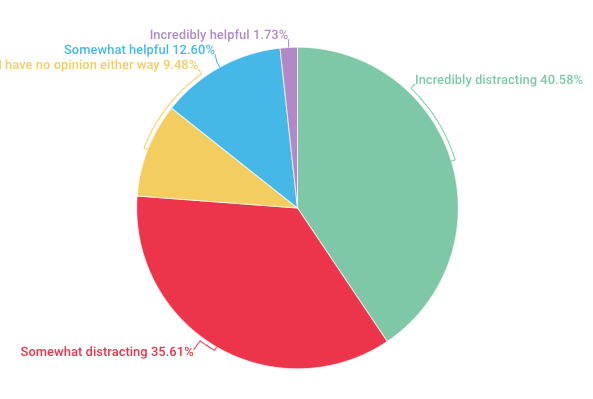On the Horizon: Arapahoe Budget Cuts
February 14, 2020
Last year, the ‘Red4Ed’ protests for increased school funding made headlines by closing schools across Colorado. Supporters protested the fact that Colorado currently has the 11th lowest per pupil spending of any state, despite having the 16th highest GDP. Less than a year later, underfunding is still affecting school districts across the state, and Littleton Public Schools is no exception. With over $4 million in budget cuts across the district, Arapahoe High School is in a uniquely precarious position, due to issues with declining enrollment that Principal Natalie Pramenko describes as, “The intersection of multiple negative issues.”
“We will have cuts. And they will be bigger at Arapahoe than any other school.”
— Natalie Pramenko, Principal
“We will have cuts. And they will be bigger at Arapahoe than any other school,” Principal Natalie Pramenko says of the Littleton Public Schools’ budget cuts. “They don’t fund education well in Colorado. It’s difficult, and because we love what we do, we always find a way to do more with less. We make it work, but at some point it affects us. And it’s hard to hear the legislature, year after year, not fund education the way it needs to be funded for the sake of our kids.”
The legislature Pramenko refers to follows a set pattern for determining school funding. All public school funding is awarded on a per-pupil basis, based on the number of students determined in the annual October count. Colorado’s state-wide base per student is $6787.77, and money is added based on both a cost of living and a school district size adjustment. The calculated figure is then multiplied by a budget stabilization factor, which reduces per pupil funding proportionally by district in order to save money for the state. The stabilization factor reduces total school funding by 8.7%, an annual reduction of approximately $672.4 million dollars.
Because schools are funded per pupil, Arapahoe’s declining enrollment leaves the school facing an unusually drastic budget reduction for the coming year. For the 2019/20 school year, Arapahoe was staffed for 2,160 students, although the actual count was ultimately below that figure. Principal Natalie Pramenko said that there are three main contributing factors. “Our feeders are facing declining enrollment,” said Pramenko, referring to the Littleton Public Schools middle schools that typically send freshmen to Arapahoe. But, Pramenko asserts, that’s not the only cause. “Empty nesters stay in their houses and don’t move, making it difficult for young families to buy into the Arapahoe attendance area. We predicted this was coming, and now it’s hitting us,” Pramenko said. The percentage of individuals over 50 in Arapahoe County has increased from 23% in 2000 to a projected 32% in 2020, reflected by the aging demographics in Arapahoe’s feeder neighborhoods.
Also contributing to Arapahoe’s enrollment issue is a reduced number of students open enrolling from Douglas County. “We benefited greatly when Douglas County was in turmoil- we saw a massive increase in open enrollment said Pramenko. “I’m happy that they are in a better situation, but it definitely affects our open enrollment. That’s been our biggest feeder, outside of our own middle schools.” Reductions in Arapahoe’s projected enrollment due to all three sources lead to significant budget cuts for Arapahoe next year. “Incoming eighth graders in our feeder district are the lowest I’ve seen in my 16 years here,” said Pramenko.
Arapahoe’s budget cuts will be most prominent in staffing. Littleton Public Schools count teachers for funding purposes by a point system. Full-time, certified teachers are worth 1.0 point. Classified staff- administrative assistants, clerks, and other support staff- generally count as less than a full point. Points are influenced by factors including training, hours worked, and level of responsibility. Across the district, all secondary schools have to ‘give back,’ 0.5 points for the 2020/2021 school year, to accommodate the $4.5 million Littleton Public Schools deficit. Arapahoe will also be responsible for additional cuts, exceeding the 0.5 point figure.
“I love my teachers. And telling someone they don’t have a job next year is going to be brutal.”
— Natalie Pramenko, Principal
A large point reduction will mean significant changes in staffing for next year. “Sitting in the office of principal during this— it hurts. It’s hard,” said Pramenko. There are a few different ways that Arapahoe can reach a sustainable point figure, including renegotiating teachers to part-time and utilizing attrition, or teachers choosing to leave of their own accord. Pramenko said, “You hope to be able to make cuts with attrition— you just don’t rehire that position.” But with only one teacher scheduled to retire at the end of this year, Arapahoe cannot rely on attrition alone. Another method of cutting points is transitioning some teachers to part-time, a strategy Pramenko describes as “a reduction without losing the person.” Even with these measures in place, some staff will need to be let go to accommodate budget restrictions. “I love my teachers. And telling someone they don’t have a job next year is going to be brutal,” said Pramenko.
However, Pramenko stresses that students shouldn’t worry about overfilled classrooms due to reductions in staffing. “The piece that’s important to understand is that when it comes to class sizes, they’re not going to jump- enrollment is also going down, so it will stay proportional,” said Pramenko. “We may have fewer sections, but at the end of the day, we can’t fit more than 36 desks in most rooms.” But understaffing could potentially have repercussions for scheduling options. While administration doesn’t foresee a significant loss in the variety of classes offered, budget constraints may limit the number of sections available for some electives.
One alternative Arapahoe is considering to increase program flexibility is online classes. “We’ve been given some support from the district to potentially start some online offerings for kids,” said Pramenko. “Our vision for online offerings would be big. If we could offer online classes for kids [who are] even outside of the district, that would be big. Especially if we could then count those students in our per student funding.” Ultimately, Pramenko said, “We don’t anticipate any [school programming] going away because of [budget cuts].”
Arapahoe and Littleton Public Schools are working towards increasing funding for future years. The last significant funding approved for staffing Littleton Public Schools passed in 2010. That mill levy, a property tax to fund school personnel, has subsidized costs, but that money has run out. “We’re hoping the voters in the LPS community will pass another mill levy. That could potentially give us some relief for staff,” said Pramenko. Mill levies, however, can be difficult to pass, as they necessitate a raise in taxes. Further complicating raising school budgets is Colorado’s Taxpayer Bill of Rights, or TABOR. TABOR limits the amount of money that the state of Colorado can collect and spend, and requires voter approval for tax increases. Because voters have to vote to increase taxes on themselves for budget measures, it is very difficult for school districts to pass funding increases.
Specifics in funding legislature can also cause confusion about what money can be spent for. The Littleton Public Schools bond that passed last year generated funds to be spent on things, like building renovations and classroom updates. Arapahoe will renovate the Trophy Hall and teacher bathrooms with bond money, as well as updating lighting in the theatre. The artificial turf and stadium lighting for the football were also installed using bond money. While spending money on facilities may seem frivolous compared with imminent staffing budget cuts, Pramenko said, “[Bond] money cannot be used for staffing purposes- it’s really important for people to understand that.”
Despite impending time pressure, the exact timeline for budget cuts and layoffs remains uncertain. “I wish I could give you a definite timeline. It’s complicated. Since [Winter Break,] a lot has happened,” Pramenko said. There are numerous factors that complicate final decision making. “I’m not allowed to touch mental health, safety, or security positions- and I understand that, and am supportive of that. But that complicates things a little bit,” said Pramenko. “My personal goal is to let people who won’t be back know before the end of February. Normally, when people won’t be renewed, I try to let them know before Spring Break, but if [it]’s a possibility, I’d like to let them know sooner.”
“I think there is a lot of good news on the horizon. It just takes some time.” — Natalie Pramenko, Principal
Budget cuts, however, aren’t a death sentence for Arapahoe. Pramenko said, “I think [enrollment numbers] will turn, and I think AHS will get back to capacity- 2,050 is ideal.” While she acknowledges that layoffs are difficult, Pramenko said, “I am confident that [teachers] will land on their feet. They are incredible teachers, and someone will be fortunate to have them.” And that hope for the future extends to Arapahoe as a whole. “I think there is a lot of good news on the horizon,” Pramenko said. Some of that good news comes in the forms of renovating and rebuilding Arapahoe’s in-district feeder schools, aided by bond money. “They’re rebuilding Ames… I imagine people will opt in to Newton to get into the newer building, which will help us. [Students] are going to get here, it just takes some time.” Overall, Pramenko believes, “It’s not a doom and gloom story. But it’s the reality- it’s where we are.”
“Unfortunately, this is going to be a rough couple of years. But I believe we will be fine. Arapahoe is amazing, and we’ll get our numbers back up.”











